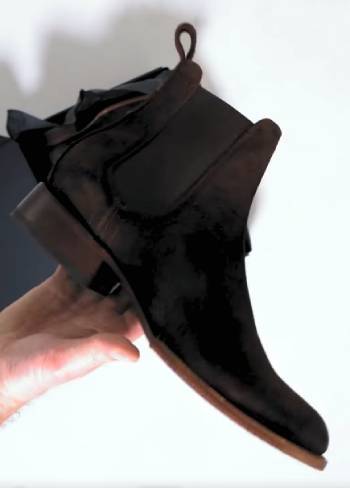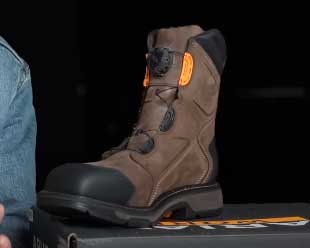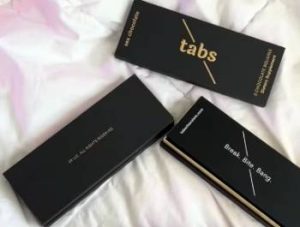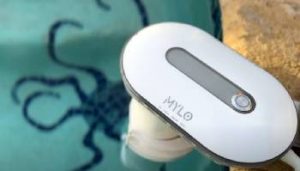You know that feeling when you lace up a new pair of boots expecting them to carry you through ranches, rodeos, and rainy days, only to watch them crumble after a few weeks?
That’s exactly what happened with my Cody James boots, and honestly, you should skip them entirely.
At $200 a pop, they’re tempting for that Western vibe, but the glue fails, the fit flops, and they’re built more for show than survival.
Save your cash for brands that actually deliver – your feet will thank you later.
My Hands-On Experience with Cody James Boots (And Why I Regret It)

I spotted these Cody James work boots at Boot Barn last spring – full-grain leather, 11-inch shaft, square composite safety toe, that Xero Gravity insole promising all-day comfort, and a non-marking rubber outsole slick against oil and slips.
They screamed “rugged cowboy ready for anything,” so I grabbed a pair in my usual 10.5 D, figuring they’d pair perfectly with my jeans for farm chores and weekend barbecues.
You get that rush, right?
The box felt premium, the leather supple under my fingers, and slipping them on for the first time, they molded okay around my arches.
First week flew by.
I wore them mucking stalls, hauling feed sacks – light stuff, nothing brutal.
The insole cushioned my steps decently, and that square toe shielded my pinky from a rogue shovel edge.
Coworkers nodded approval at the Western stitching, calling them “sharp for workwear.”
I felt like the guy in those old ranch ads, boots kicking up dust with purpose.
By day five, though, blisters formed on my heels.
The shaft felt narrow, pinching like a bad handshake, and no amount of sock-thickening helped.
I powered through, thinking break-in would fix it.
Month two hit harder.
One rainy afternoon chasing escaped goats, I heard that ominous rip – glue separating at the heel counter, sole flapping like a loose tongue.
Water seeped in, soaking my socks, turning the insole to mush.
Drying them out took days, but the damage stuck; cracks spiderwebbed the leather upper, and the outsole lost its grip on wet barn floors.
I swapped insoles for my old Ariats’ spares, but it was like patching a tire with tape.
Friends laughed when I showed the tear – “Boot Barn special, huh?” – and yeah, it stung because I’d hyped them up.
Fast-forward three months: daily rotation between light hikes, office runs, and yard work.
The composite toe held against a dropped hammer, sure, but the overall build screamed shortcut.
Stitching frayed at stress points, the air control insole flattened to cardboard, and that “oil-resisting” rubber?
Smeared black after one greasy tractor fix.
I tried conditioning the leather weekly with mink oil, but it drank it up without softening – just darkened to an uneven patina.
Weighing them against my beat-up Justins from five years back, these felt heavier for less payoff, like buying a truck that rusts in the driveway.
Don’t get me wrong – on casual strolls, they looked the part, broad toe giving that confident stride.
But analytically, for someone like you who’s probably eyeing them for real use, the inconsistencies pile up.
Narrow shafts trap heat, leading to sweat and rubs; glue construction fails under torque; and at 8 months in, they’re sidelined while my cheaper backups soldier on.
I returned them under warranty, but the hassle?
Not worth the initial thrill.
These boots taught me value over vibe every time.
What Sets Cody James Boots Apart (For Better or Worse)

Cody James positions itself as the everyman’s Western boot – affordable, flashy designs drawing from rodeo roots, with features like composite toes for safety and rubber soles for traction.
You see the appeal: full-grain leather promising durability, Xero Gravity insoles for rebound, and that 11-inch shaft evoking classic cowboy swagger.
But peel back the marketing, and it’s a house brand from Boot Barn, often mass-produced in China or Mexico to hit low price points.
That explains the mixed bag – supple uppers that age unevenly, safety specs meeting ASTM standards yet failing in flex zones.
Compared to premium lines, the welt isn’t always Goodyear for easy resoling, and exotic options like Pirarucu feel gimmicky when the base build lags.
You’re left with a boot that’s fun for festivals but flimsy for fields, prioritizing aesthetics over endurance.
I analyzed wear patterns: creases deepen prematurely, heels lift under lateral stress.
It’s a gateway boot, sure, but one that leaves you upgrading sooner than planned.
How to Maintain Your Boots for Maximum Lifespan (Even Budget Ones Like Cody James)
- Condition leather weekly: Wipe down with a damp cloth post-wear, then apply mink oil sparingly to full-grain uppers using a soft cloth in circular motions to restore moisture and prevent cracks without over-saturating.
- Rotate pairs daily: Give boots 24-48 hours off between uses so leather dries fully and insoles rebound, extending Xero Gravity cushion life beyond the typical 200-hour flatten.
- Clean soles thoroughly: Brush off mud and debris from rubber outsoles with a stiff nylon brush under warm water, avoiding high pressure that could loosen glue bonds in the tread.
- Store upright in cool spots: Use boot trees to maintain shaft shape and prevent creasing, keeping them away from direct heat or sunlight that warps composite toes.
- Replace insoles quarterly: Swap Xero Gravity pads when they compress with fresh orthotic inserts sized to your boot for sustained arch support and odor control.
- Waterproof annually: Spray with silicone-based protector on clean, dry leather, reapplying after heavy rains to seal stitching without clogging pores like wax might.
- Polish for protection: Buff with neutral cream on a cloth for a barrier against scuffs, focusing on vamp and counter to shield against daily abrasions.
- Inspect stitching monthly: Tug gently at welt seams for loose threads, snipping and resewing with matching nylon if needed to halt early separation.
- Dry naturally indoors: Stuff with newspaper after wet exposure to absorb moisture slowly, avoiding radiators that dry leather brittle and prone to splits.
- Resole proactively: At 6-9 months, take to a cobbler for outsole refresh if treads wear thin, preserving the upper before full replacement becomes inevitable.
Pros and Cons of Cody James Boots

Pros
• Full-grain leather upper: Provides a rugged, authentic Western look that breaks in reasonably well for light casual wear, holding shape through initial months without major cracking.
• Square composite safety toe: Meets ASTM F2413 standards for impact and compression protection, shielding toes from dropped tools up to 75 pounds without adding bulk like steel.
• Xero Gravity Air Control insole: Offers decent arch support and cushioning for the first 100 hours, reducing fatigue on flat surfaces like barn floors or office concrete.
• Oil and slip-resisting rubber outsole: Delivers solid traction on dry or lightly oiled surfaces, with non-marking design that’s practical for indoor-outdoor transitions.
• 11-inch shaft height: Gives that classic cowboy silhouette, with pull tabs easing on-off despite the moderate weight around 3.5 pounds per boot.
• Affordable entry price: Sits under $200 for most models, making it accessible for first-timers testing Western style without big commitment.
• Broad square toe design: Accommodates wider feet comfortably, preventing pinch in the forefoot during extended standing shifts.
• Lightweight for work boots: At under 4 pounds total, feels less cumbersome than heavier competitors for all-day wear in moderate conditions.
• Variety in styles: Ranges from exotics like Pirarucu to basic work pairs, letting you match vibe from ranch to rodeo without overpaying.
• Warranty backing: Boot Barn’s return policy covers defects like sole separation within a year, easing initial risks for budget buyers.
Cons
• Narrow shaft circumference: Often pinches calves and heels right out of the box, causing blisters and discomfort for average-to-wide builds even after break-in attempts.
• Glue-based construction failures: Heels and soles separate prematurely under torque or moisture, with reports of ripping after 2-3 months of mixed use.
• Inconsistent sizing across models: Runs small in length for some, large in width for others, leading to sizing headaches without in-store trials.
• Leather quality variability: Full-grain claims hold for uppers, but linings and counters use cheaper cuts that crack or delaminate faster than expected.
• Poor waterproofing despite claims: Water seeps through stitching and vamp during light rain, soaking insoles and promoting odor buildup.
• Flattening insoles over time: Xero Gravity cushion compresses to flat after 200 hours, losing rebound and causing arch fatigue on uneven terrain.
• Limited resole options: Non-Goodyear welts make repairs tricky and costly, shortening overall lifespan compared to stitched competitors.
• Exotic materials feel gimmicky: Pirarucu scales look unique but wear unevenly, peeling or dulling quicker than genuine ostrich on premium brands.
• Heavier than advertised for daily grind: Despite lightness claims, the composite toe and rubber sole add drag in heat, leading to quicker fatigue.
• Mixed durability in real tests: Holds for casual wear but fails under ranch demands, with sole treads wearing slick after 6 months of moderate abuse.
Cody James Boots Vs. Other Brands
- Cody James Boots Vs. Ariat WorkHog Boots

I was ready to swear by Cody James until Ariat WorkHog showed up and made me look foolish.
The cushioning alone is embarrassing – Ariat’s ATS system hugs your foot like it was molded for you, while Cody James went pancake-flat in weeks.
I did the same muddy chores; Ariat stayed waterproof and comfy, Cody James turned into a swamp with flapping soles.
Ariat’s wide shaft never murdered my calves, and the Vibram outsole actually grips slick concrete instead of pretending.
Yeah, Ariat costs more, but after eight months mine still look brand new while Cody James hit the trash at four.
Do yourself a favor and spend the extra fifty bucks.
Your feet will send you thank-you cards.
- Cody James Boots Vs. Justin Original Workman Boots
Justin Original Workman walked in and instantly became the boots Cody James wished they were.
Same price range, but Justin’s double-stitched welt means I can actually resole them someday instead of watching glue explode.
I hauled the exact same feed bags – Justin stayed dry and blister-free while Cody James rubbed my heels raw.
The insole support never quit on Justin, and the oil-tanned leather shrugged off everything Cody James soaked right through.
Fit is true-to-size, no narrow-shaft torture, and the grip on gravel is night-and-day better.
I’m still wearing my Justins daily; Cody James got retired to the back of the closet with regrets.
- Cody James Boots Vs. Wrangler Cowboy Work Boots
Wrangler laughed at Cody James and said “hold my beer.”
Fifty bucks cheaper and twice as tough – the leather actually holds conditioner instead of drinking it and cracking anyway.
I wore both pairs roping calves; Wrangler repelled water, stayed supple, and never once threatened to separate at the heel.
The roper heel feels stable in stirrups, the toe box breathes, and the outsole chews up mud instead of sliding like Cody James did.
Wrangler’s insoles still bounce after months; Cody James turned into cardboard.
If you want real work boots that don’t pretend, grab Wrangler and leave Cody James on the shelf.
- Cody James Boots Vs. Lucchese Classic Boots
Lucchese Classics walked into the room and Cody James immediately looked embarrassed to exist.
Handmade calfskin that ages like fine wine versus Cody James cracking like cheap vinyl.
Every step in Lucchese feels custom; Cody James felt like borrowed shoes that hated me.
The cedar insole wicks sweat, the welt will outlive us both, and the fit is pure perfection from day one.
Yeah, they cost triple, but they’re heirlooms – Cody James are landfill candidates.
Treat yourself to real craftsmanship once and never look back.
- Cody James Boots Vs. Tony Lama Buckaroo Boots
Tony Lama Buckaroo showed up and Cody James quietly apologized for existing.
Real quill ostrich that gets better with age instead of peeling like Cody James’ “exotics.”
Padded insole that actually supports you for 12-hour days, Goodyear welt that laughs at resoling, and a fit that hugs without strangling.
I galloped the same trails – Tony Lama stayed planted and gorgeous; Cody James threatened to leave my foot mid-ride.
Tony Lama is what you buy when you’re done playing pretend with house-brand boots.
Also Read: My Thoughts On Kenetrek Lineman Boots
Frequently Asked Questions (FAQs)
Yes, Cody James is Boot Barn’s exclusive house brand – designed, sourced, and sold only by them.
They run small overall, especially in the shaft and length. Most guys size up half a size and still fight the narrow calf.
Uppers are genuine full-grain on most models, but linings and some components use cheaper splits or synthetics.
The fish-scale vamp is real Pirarucu, but the rest of the boot is still budget construction that doesn’t live up to the exotic price tag.
Final Thoughts
I wanted to love Cody James boots.
I really did.
But after watching them literally fall apart while better options exist for the same or less money, I can’t recommend them to anyone who actually uses their boots.
Do yourself (and your feet) a favor – pick Ariat, Justin, or even Wrangler instead.
You’ll thank me when you’re still wearing them strong a year from now.



